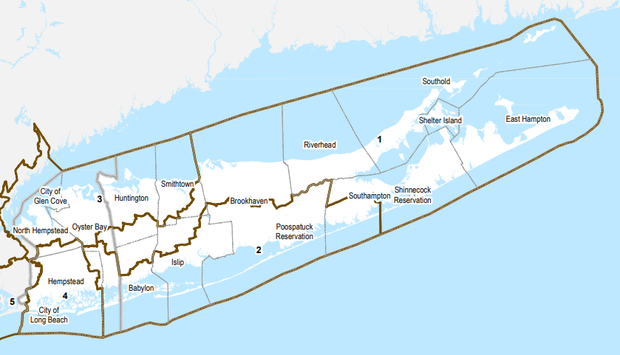Judge orders New York's congressional map to be redrawn
New York's congressional and state legislative maps will have to be redrawn after an acting state Supreme Court judge found partisan bias in the map "beyond a reasonable doubt." The judge also found the way the Democratic-controlled legislature took over in redrawing the map violated the state's constitution.
The U.S. House map passed by the Democratic majority in Albany would have created 22 Democratic seats and 4 Republican seats. The current split in their congressional delegation is 19 Democrats and 8 Republicans.
New York acting Supreme Court judge Patrick F. McAllister asked New York's Democratic-controlled legislature to work with Republicans and pass a congressional map with "a reasonable amount of bipartisan support to insure the constitutional process is protected."
McAllister set an April 11 deadline for the legislature to send redrawn maps for the congressional and state legislative lines—though he did not explicitly define "a reasonable amount of bipartisan support." If the legislature does not pass a map, the court will hire an expert.
The court also suggested moving the state's primary from June 28 to August 23, which would set a deadline of July 8 as the absolute latest date that the maps and ballots could be finalized.
New York Democrats have said they will appeal the judge's decision in state court and potentially extend a trial over these maps long enough to the point where their maps can still be used in November.
"This is one step in the process. We always knew this case would be decided by the appellate courts. We are appealing this decision and expect this decision will be stayed as the appeal process proceeds," Mike Murphy, spokesman for the Senate majority, said in a statement to CBS New York.
In Ohio, the state Supreme Court extended the timeline for a case over its maps past the May 3 primary date, resulting in the enacted GOP-friendly map to be eligible for the 2022 elections.
New York is one of several examples where in which Democratic-led legislatures utilized their control to aggressively gerrymander maps in their favor and add U.S. House seats (as was the case in Oregon, Illinois and Maryland). Republicans have commonly practiced gerrymandering and did so this year in Ohio and North Carolina.
McAllister's decision followed a Maryland circuit court's decision earlier this month to order a redraw of their own Democrat-favored congressional map. Republican Governor Larry Hogan received a new proposed map from legislators on Thursday. He has six days to take action on it.
McAllister wrote that there was proof "beyond a reasonable doubt" of partisan bias in New York's map. He cited testimonies from experts who presented thousands of "unbiased computer generated maps." He noted that there were at least some competitive U.S. House districts in those simulations, while the map passed by the legislature has zero.
"The court finds by clear evidence and beyond a reasonable doubt that the congressional map was unconstitutionally drawn with political bias… one does not reach the worst of 2,500, 5,000, 10,000 or 50,000 maps by chance," he wrote.
"Those who have looked at the New York map, independent experts, and those who are like me, who are involved in the political process, have stated right from the beginning that of all 50 states engaged in redistricting, this was by far the worst gerrymandering in the country," said former New Jersey Governor Chris Christie, a Republican, on a call with reporters on Thursday.
Christie is a co-chair of the National Republican Redistricting Trust.
In 2014, an amendment to New York's constitution passed that would prohibit creating maps with partisan bias. It created an independent redistricting commission that had two attempts to send a compromise map to the New York legislature. The commission never agreed on one Congressional map to send, and sent two maps to the legislature the first time. After those were rejected and the commission had a second try—they failed again to send a compromise map.
McAllister wrote that the commission had "no bipartisan support in their submitted plans, and they "never embraced the task of coming up with compromise plans."
Originally in this scenario, the legislature would have control to only "slightly tweak" the maps sent by the commission. But the legislature passed a law in January 2022 that would give them total control of the process in case the commission failed. They originally tried to do this through a ballot proposal in November 2021, but that was rejected.
Because McAllister found that the law they passed is essentially a constitutional amendment, which requires to be passed by New York voters, the judge found it was unconstitutional that the legislature completely take over in drawing the maps.
"It is clear from reading the constitutional amendment that the people of the State of New York believed that nonpartisan maps agreed upon as a result of a compromise were the best way to avoid gerrymandering when redistricting," McAllister wrote.
"This court finds that although it will be very difficult, this court must require new maps to be drawn and the current maps are void and unusable," he added, saying it is up to the legislature and governor to create new times/deadlines for signature gathering and requirements.






